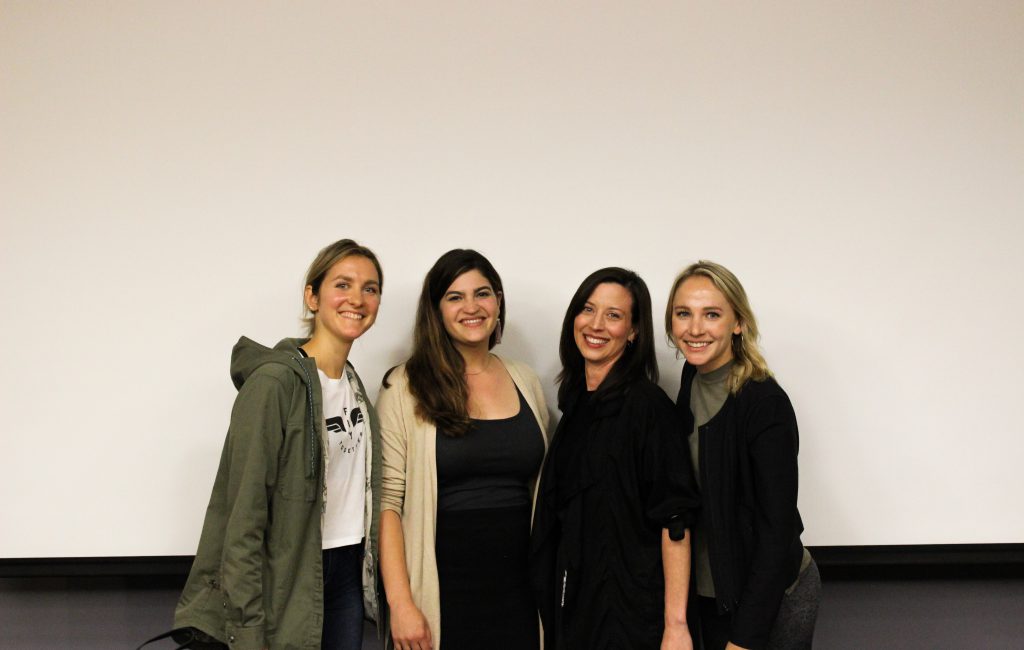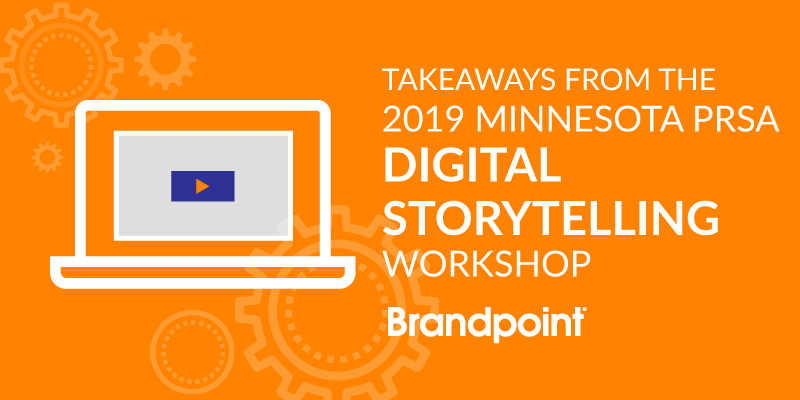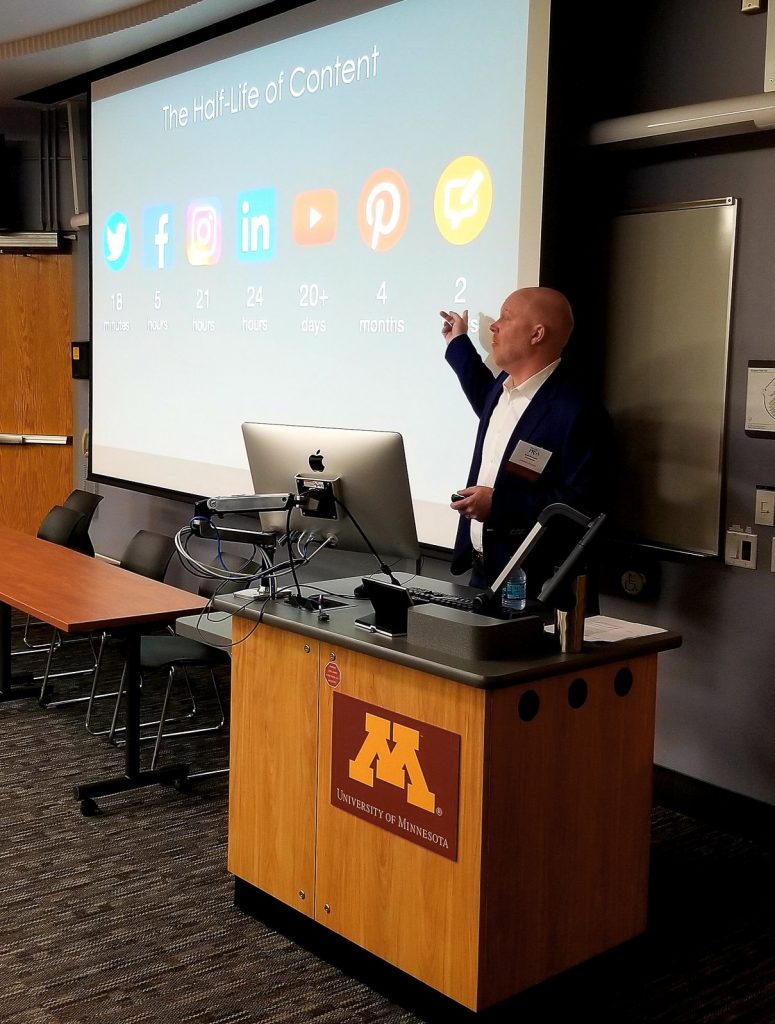Minnesota PRSA is a chapter of the Public Relations Society of America (PRSA). Each year, Minnesota PRSA hosts a half-day workshop for public relations and marketing professionals to network, hear from other professionals in the industry and learn about what other companies are doing in the world of PR and Marketing. Each year, there is a different topic of focus, and this year’s was “Digital Storytelling.”
2019’s workshop took place on June 24 and was hosted by Minnesota PRSA and the Hubbard School of Journalism at the University of Minnesota – Twin Cities. The event was also hosted in a building on the University of Minnesota campus. The day started off with breakfast and coffee, followed by open time for networking while others arrived. There was a full schedule for the day, including speakers, presentations and discussion panels.
“Expertise, Authority and Trust in Digital Storytelling: What’s Working in 2019”
Scott Severson, President of Brandpoint, opened the day with an informative keynote presentation. He discussed ways to tell digital stories and create content that resonates with a brand’s audience while achieving their business goals: “Great content comes before monetization and it is important to have great content at every potential buyer touchpoint.”
Scott also explained the need for E-A-T when creating content, which stands for expertise, authority and trustworthiness. E-A-T is now one of the three biggest factors Google’s algorithms consider when constructing search engine results pages. A couple ways to establish E-A-T include having polished and consistent content, conducting research and citing reliable sources, being helpful to your users and making users feel safe.
[Read more: Learn how to create a culture of experimentation in an event marketing world!]
One notable statistic was that the average piece of content on the first page of the search engine results is 1,850 words. Does this mean that every single piece of content you post on the internet needs to be 1,850 words? No. You have to be strategic about how long you make your content. What this statistic does tells us is that longer content generally places higher on search engine results pages. On the other hand, you don’t want to add content just for the sake of creating longer pieces. Rambling and repeating points will not benefit you or your content’s placement on SERPs. Longer content also poses a threat to the readability of the post. Including headers, block quotes and images will help to make the post readable and easier to digest.
Main Takeaways:
- Create great content – Don’t add words for the sake of creating longer content.
- Establish E-A-T – Expertise, Authority and Trust will help you rank higher in SERPs.
- Don’t solely rely on word count – Write substantial, relevant content while striving for readability.
“Brand Love in a Sea of Indifference”
The next topic was presented by Bridget Jewell, Creative Director at Periscope. She presented examples and tips to use when creating social content, generating campaign strategies and working with influencers.
Bridget’s first point was to “strive for thumb-stopping content.” While scrolling through 300 feet of social feeds a day, how do you decide what to pay attention to? For brands to stand out, the content you’re posting needs to be useful, interesting and of value to your audience, or else don’t bother.
Another relevant point she made was to be creative and curate content for the different platforms your brand is using. A great example she shared with us is how New York Public Libraries is breaking the norm with their use of Instagram stories. New York Public Libraries created “Insta Novels,” which is a “reimagining of Instagram stories to provide a new platform for iconic novels.” In addition to the original text, they included animation, graphics and a place for your thumb to click through the pages. This was an awesome example of how a brand optimized content for a specific social platform while turning old content into something new and exciting.
The last point Bridget made was to leverage influencers that are right for your brand and your campaigns. It is important to take the time when searching for influencers for your brand. The key is to look for long-term relationships, not short-term partnerships. As a company, you should also ask, does this influencer LOVE our brand? Is their personality right for us? If the answer is no, it will show through their content.
Main Takeaways:
- Social content must be entertaining, or else don’t bother.
- Push the limits with digital content to make it relevant.
- Leverage the right influencers.
Media Influencers Discussion Panel
The next topic on the agenda was media influencers. During this discussion, we heard from four different panelists: Maggie LaMaack from Fast Horse, Erin MacMillan from General Mills, Justine Perez from US Bank and Morgan Wagner from Cameron’s Coffee. This discussion panel was moderated by Jason Schumann from Ampere Communications.
The four panelists emphasized the importance of choosing the right influencers and creating a relationship between the influencer and the brand. Long-term relationships will be more beneficial for both parties in comparison to short-term partnerships.
It was also interesting to hear how different-sized companies utilize influencer relationships. Smaller companies don’t have the same buying power as larger companies, so they have to be more strategic about how they create their influencer relationships. On the flip side, larger companies have more interest, as well as buying power. They often utilize multiple influencer relationships at a time. In order for larger companies to create the most effective influencer relationships, they have to really get to know the influencers to decide which are going to be the right fit. One of the panelists also mentioned that they appreciate hearing “no” from an influencer. This shows they care about being the right fit.
Main Takeaways:
- Create long-term relationships.
- Find the right fit and appreciate hearing “no.”
- Different-sized companies utilize influencers differently.
“8 Social Media Trends to Watch for the Rest of 2019”
Arik Hanson from ACH Communications presented on digital trends, specifically social media trends, to watch for the rest of 2019. Below is a high-level overview of the trends he predicted.
8 Pragmatic Social Media Trends:
- Instagram will take over as brands’ social media home base.
- Instagram will become all about Stories.
- Engagement, as a key metric, begins to fade.
- Shift from one-to-many to one-to-one accelerates.
- More focus on overlooked and niche social media sites.
- 2019 may (finally) be the year of the social CEO.
- Less “let’s go viral” and more “let’s build community.”
- Organic reach is dead (or is it?).
Arik backed up his predictions with relevant facts, statistics and real-world examples. He also made sure to address what these trends mean for PR and marketing professionals and what we can be doing to stay on track with the trends.
Check out Arik’s slide deck from the 2019 Minnesota PRSA for more details on his trend predictions.
Microstorytelling Discussion Panel
We ended the MN PRSA workshop with a microstorytelling discussion panel, moderated by Carrie Wyman, Director of Marketing at Brandpoint. During this discussion, we heard from three different panelists including Felicia Johnson from the Minnesota Vikings, Susan Garcia Hagen from the University Relations Office at the University of Minnesota and Laura Docherty from Fly Feet Running. We learned about the use of microstorytelling through Instagram Stories from three different-sized brands, as well as best practices.
Across all three panelists, there was a common opinion that Instagram Stories are a place for your brand to get creative, experiment and take risks. Posts should be fun and engaging, yet relevant to your audience. If your brand wants to experiment with live video, photos, polls, etc., this is the place to do it. You can post something for 24 hours and then it will disappear, so if it wasn’t exactly what you wanted, no big deal. On the other hand, if you really like a Story you posted, you can save it to Story Highlights for anyone to see at any time.
Another popular opinion from the panelists is that Stories shouldn’t be something that take hours to produce. Stories should be something you can do on the fly. For example, Felicia Johnson from the Minnesota Vikings talked about how they use Instagram Stories to post short clips behind the scenes during the game. The panelists also mentioned using templates for your Stories.
The last takeaway from the microstorytelling panel was to use unique content in your Stories. Stories are a place to post something additional and different, rather than simply recapping or restating something your audience has already seen. You have to give your audience a reason to watch. If someone is at a Vikings game, they most likely will see the big plays of the game or at least recaps on the big screen. Posting short clips of players on the sidelines instead will give fans additional insight into the game.
Main Takeaways:
- Instagram Stories are a place to experiment and take risks.
- Don’t spend too much time on Stories, as they should be quick to produce.
- Use unique content on your Stories, and don’t recap what your audience has already seen.

Learn more information on Minnesota PRSA and their upcoming events.








